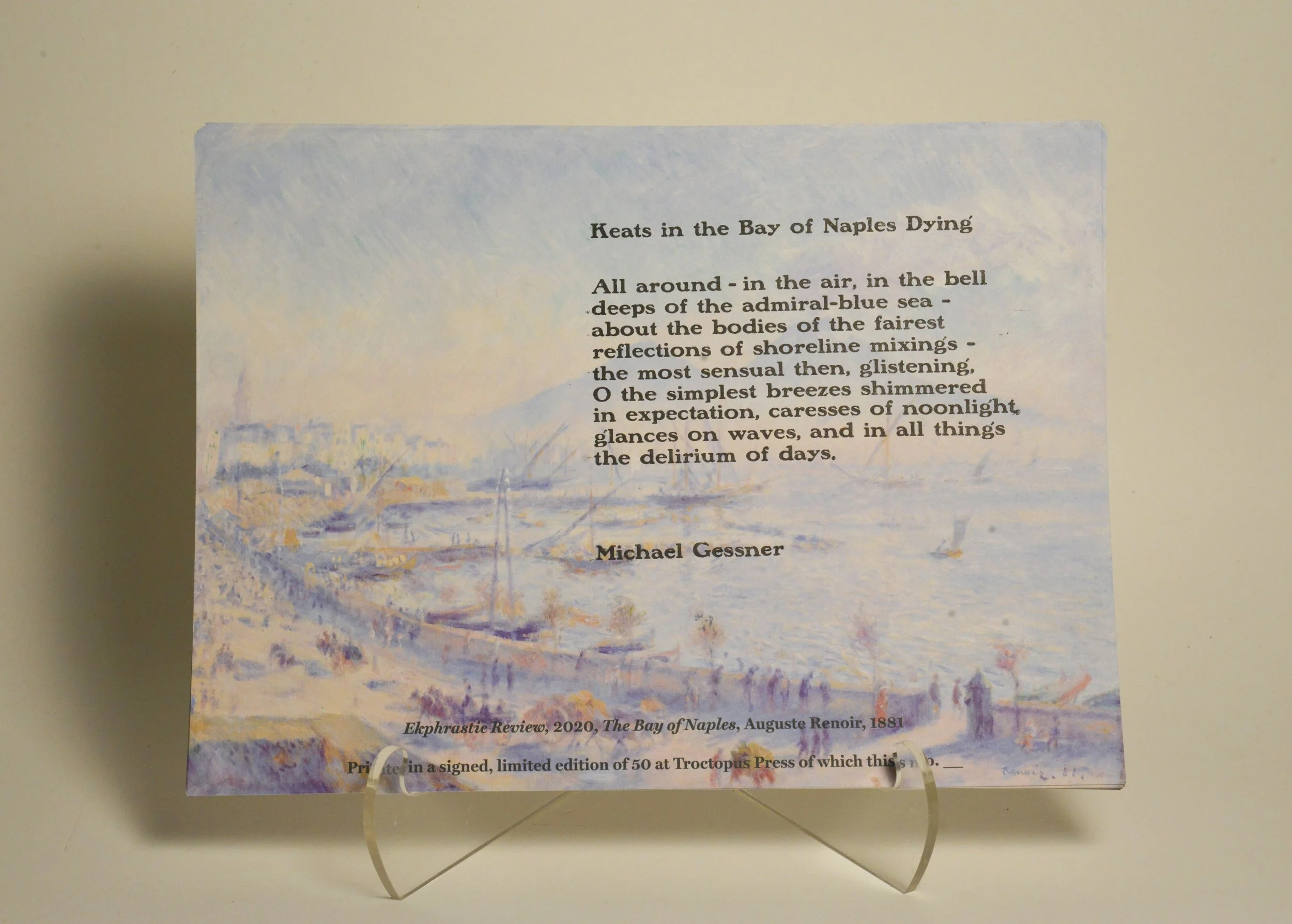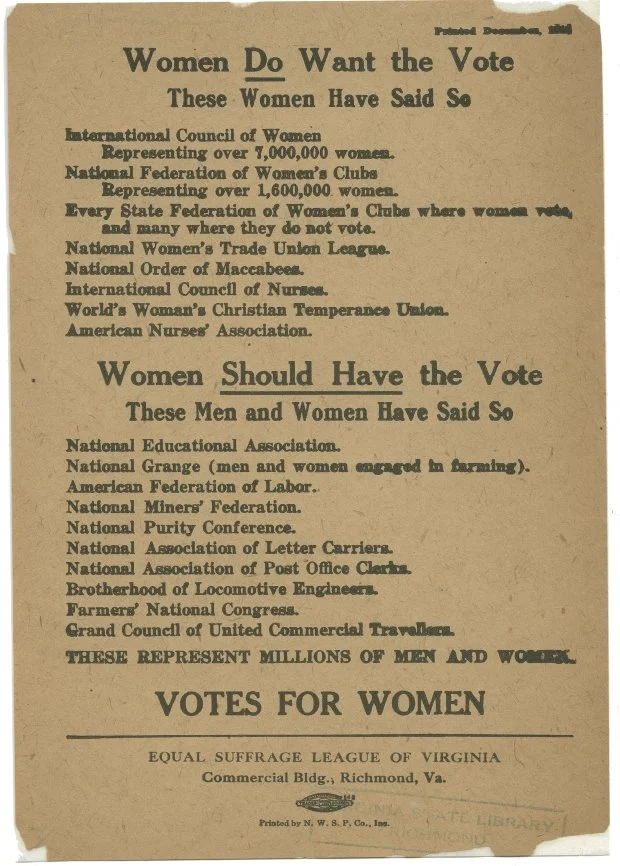Broadsides & Commission Highlight
Broadsides, simply speaking, are print ephemera that is printed only on one side. They are by far one of the most popular methods of printed collectibles spanning from the legendary Gutenberg in 1454 to the present day. Broadsides can aesthetically include both and either text and image and have a variety of uses from advertisements, to poetics. Traditionally, broadsides were printed on the most inexpensive paper available because quantity was the goal. With the introduction of the printing press, literacy rates rose and thus broadsides became more relevant to sell products, to advertise events, and more.
Meaning can emerge from the combination of text and image upon a single sheet of paper, and through broadside culture, poster design and graphic arts emerged. One of my first broadsides The End is Near was made using an old photograph from my family archive of my great grandmother. I had no relationship to her, and it wasn’t until after I found her photograph that my mother gave me context. Up until that moment, she was a picturesque old woman, a stand-in for aging with grace. With that sentiment, I approached the text of this piece. Hand-set wood and lead type announce, “The End is Near!” and to complicate things, the central text is a list poem about how to live a full life, with notable additions such as “kiss a puppy”, “bake bread”, and “wear your favorite pair of socks”.
Here is a contemporary example of a broadside printed at Ampersand Book Studio in Tucson, AZ by Tristan Reader for his Master and Commander project. It’s a three color broadside printed on a Heidleberg letterpress machine on Arches MBM paper and is considered a collectible item. The broadside advertises riches, and silks to the brave souls that are hungry for the adventure of a sea voyage!
Poetry Broadsides
Broadsides were not just a format for advertisements, but songs, bible verses, and also poetry were very popular content for this printing format. The University of Arizona’s Poetry Center boasts a collection of over 800 poetry broadsides that oftentimes (but not always) include elegant combinations of text and image printed using letterpress techniques. This methodology of printmaking typically uses typography as an art form and relies upon the viewer to not only read and imagine the poetry, but to also contemplate the craftsmanship behind the printmaking techniques, the choice of image, the texture of the paper, and color choices. It combines art criticism with literary aesthetics making for a complex visual experience.
I had the recent pleasure to be commissioned by Michael Gessner, to print a broadside of his poem “Keats in the Bay of Naples Dying” upon Renoir’s painting The Bay of Naples. This 8.75”x12” broadside was letterpress printed on archival 80lb cover carbon neutral paper using hand-set 18pt Post Oldstyle Roman No. 2 type.
Michael Gessner was born and raised in Michigan. He earned his BA from Wayne State University and his MA and PhD from the University of Colorado, Boulder. He has authored 11 books of poetry, essays, and fiction. Twice nominated for a Pushcart Prize, he has been a finalist and semi-finalist in various competitions, including “Discovery”/ The Nation poetry contest, the Pablo Neruda Award, and North American Review’s James Hearst Poetry Prize.
This broadside was printed in a limited edition of 50 using a screw top press. The type we chose was cast using an Arizona Foundry, Skyline Foundry and utilizes their 18pt Post Oldstyle Roman No. 2 type. The stark black letterpress print sits atop the pastel colors of Renoir’s painting The Bay of Naples as a giclee’ print. The combination of Gessner’s words and the buoyant brushstrokes and ethereal color palette of the piece can be summed up in the last few words of the poem, ‘delirium of days’. To inquire about commissioning your own broadside from Troctopus Press, please email me at emilandkray@gmail.com
Political Broadsides
Historically, broadsides have been used to have immediate popular power and have been used to inform the public about current events and also have a rich history within the abolitionist movement, for women’s rights, the rights of queer people, and also are excellent documentation of anti-war movements as well.
The Declaration of the Anti-Slavery Convention was printed in Philadelphia in 1833 on silk and was part of the work of the first national organizing effort that sought immediate emancipation of all enslaved people. Broadsides published by the American Anti-Slavery Society were printed mainly to conform to the view of white abolitionists and designed to gain the financial and political support of affluent white groups.
The Women’s Suffrage Movement also utilized broadsides to gain political and social support for Women’s rights to vote in the 20th century. The Equal Suffrage League of Virginia advocated for voting rights for women during the 1910’s and used broadsides to do so. Many of them believed that the right to vote was an essential aspect of citizenship to which women were entitled. They were part of more than 140 organizations within the state encompassing the membership of more than 20,000 people. Notably though, the league’s membership did not include black women, indigenous women, or other women of color.
In the late 1960’s the gay liberation movement and the Chicago Gay Liberation Front were founded. This organization helped create safe spaces for gay men and women to connect, including dances, theaters, poetry readings, concerts, and also began publishing their own newspaper and broadsides.
Anti-war movements are nothing new as colonialist empires continue to exploit the land, resources, and people around the world. From the wildly unpopular Vietnam War to now watching the United States fund Israel’s genocide of the people of Palestine, broadsides and art have been tools of resistance. You can see a seemingly never ending archive of art in support of the Palestinian people at the freepalestineproject.com and there are several printmakers who continue to use their craft as mutual aid efforts to support Palestinian refugees as well. Art that reflects these current events shows our humanity in the face of human-made atrocities, but we must all continue to offer support where we can to aid our Palestinian brothers and sisters. The broadside below is a letterpress print by Entangled Roots Press.
Lithography Broadsides
Ulises Ramos is a Mexican printmaker who received his BFA from the University of Arizona and during this summer will be starting the very prestigious lithography program at the Tamarind Institute. Ramos is skilled at a variety of printmaking methods from woodblock printing, intaglio, screenprint, and lithography. A great example of this method is Ramos’s Ramone’s broadside. This huge print measures 22”x30” . You can purchase this print for $120 by contacting Ulises Ramos directly through his Instagram platform.

















